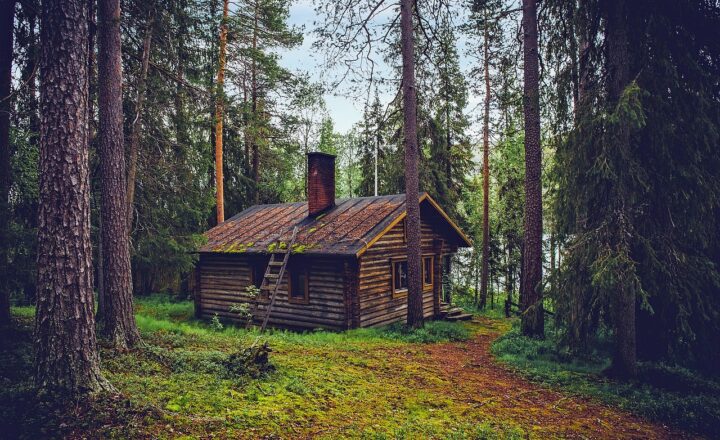Sustainable Living: 10 DIY Projects for a Greener Home
November 19, 2024

Sustainability is more than a trend; it’s a lifestyle choice that can significantly reduce our environmental impact and foster a greener world. As the effects of climate change become increasingly evident, many individuals seek ways to incorporate sustainable practices into their everyday lives. One effective approach is through DIY (Do It Yourself) projects, which not only allow you to reuse materials but also empower you to make meaningful changes in your home. This article will explore ten innovative DIY projects that anyone can undertake to create a more sustainable living space.
1. Upcycled Pallet Furniture
Old wooden pallets are often discarded as waste. However, with a bit of creativity, they can be transformed into stunning furniture pieces. Whether you need a coffee table, garden bench, or even bed frames, upcycling pallets can significantly reduce waste and give new life to these neglected materials.
**How to Create a Pallet Coffee Table:**
– Gather wooden pallets, sandpaper, and a strong wood finish (optional).
– Stack two or three pallets on top of each other to achieve the desired height.
– Sand down any rough edges to prevent splinters.
– Apply a wood finish for aesthetics and protection (optional).
– For added functionality, add wheels to the bottom.
This project not only reduces waste but also produces unique furniture tailored to your style.
2. DIY Rain Barrel
Collecting rainwater is an excellent way to conserve water, especially in areas that experience sporadic rainfall. DIY rain barrels can be installed easily to capture rainwater from gutters, which can then be used for watering gardens or outdoor plants.
**Steps to Build a Rain Barrel:**
– Obtain a food-grade plastic barrel or drum.
– Cut a hole in the top lid to allow water to enter.
– Attach a screen to prevent debris and insects from entering.
– Install a spigot near the bottom for easy access to water.
– Position the barrel under a downspout to catch rain from your roof.
Using a rain barrel not only helps in conserving water but also reduces your water bill.
3. Solar-Powered Garden Lights
Enhancing your garden with solar-powered lights is a great way to illuminate your outdoor space sustainably. These lights harness sunlight during the day to power themselves at night, reducing electricity usage.
**How to Create Your Own Solar Lights:**
– Purchase solar garden lights from a hardware store or use old glass jars.
– If using mason jars, place small solar light stakes inside to convert them into solar lamps.
– Position the lights along pathways, flower beds, or patios.
Creating solar lights not only beautifies your garden but also promotes green energy usage.
4. Homemade Natural Cleaners
Many commercial cleaning products contain harmful chemicals that can pollute the environment. Making natural cleaners at home using basic ingredients is an eco-friendly alternative.
**Common Ingredients:**
– **Baking Soda**: Great for scrubbing surfaces.
– **Vinegar**: A powerful disinfectant and odor eliminator.
– **Lemon Juice**: Acts as a natural bleach and stain remover.
**Natural Cleaner Recipes:**
– **All-Purpose Cleaner**: Mix equal parts vinegar and water in a spray bottle.
– **Scrubbing Paste**: Combine baking soda with water to create a paste for scrubbing surfaces.
Homemade cleaners are better for the environment and your home’s air quality!
5. Vertical Garden with Recycled Bottles
If you’re limited on space but want to grow your own herbs and vegetables, a vertical garden made from recycled plastic bottles is perfect. Not only does it save space, but it also reduces plastic waste.
**Steps to Create a Vertical Garden:**
– Collect plastic bottles and cut them in half.
– Drill holes in the bottom for drainage.
– Attach the bottles vertically to a wooden pallet or fence using wire or string.
– Fill with potting soil and plant your seeds or seedlings.
This vertical garden not only contributes to reducing waste but also provides fresh produce for your kitchen.
6. Compost Bin
Composting is a natural process of recycling organic matter, such as kitchen scraps and yard waste, into a valuable fertilizer for gardens. Building a compost bin is easy and promotes a sustainable waste management system.
**DIY Compost Bin Ideas:**
– Use wooden pallets to create an enclosed bin.
– Alternatively, repurpose a large plastic container with holes for aeration.
**Composting Tips:**
– Layer brown materials (dry leaves, paper) with green materials (food scraps, grass clippings).
– Keep the compost turned to aerate it and speed up decomposition.
Creating a compost bin reduces waste in landfills and provides nutrient-rich soil for your plants.
7. DIY Beeswax Food Wraps
Single-use plastic wraps can be replaced with reusable beeswax food wraps. These sustainable alternatives are perfect for covering leftovers, wrapping sandwiches, or keeping fruits and vegetables fresh.
**Steps to Make Beeswax Wraps:**
– Cut cotton fabric into desired sizes.
– Melt beeswax (combine with pine resin and jojoba oil if desired).
– Brush the melted mixture onto the fabric and allow to dry.
Beeswax wraps are not only eco-friendly but also add a touch of color to your kitchen!
8. Homemade Paper from Recycled Paper
Recycling paper at home is a fantastic way to reduce waste and produces handmade paper for various uses like crafts, cards, or wrapping gifts.
**How to Create Recycled Paper:**
– Tear used paper into small pieces and soak in water to soften.
– Blend the soaked paper into a pulp.
– Spread the pulpy mixture onto a mesh screen and flatten it.
– Allow it to dry completely before using.
Homemade recycled paper not only reduces waste but also provides a one-of-a-kind touch to your projects.
9. Create a Clothesline for Drying Laundry
Dryers consume significant amounts of energy. A simple clothesline can drastically reduce electricity rates while providing fresh air-dried garments.
**How to Set Up a Clothesline:**
– Choose a location that receives ample sunlight and wind.
– String durable rope or wire between two sturdy posts or trees.
– Attach clothespins to hang clothes securely.
Using a clothesline not only saves energy but also gives clothes a fresh, crisp scent.
10. Homemade Potpourri with Dried Flowers
Instead of purchasing chemical-laden air fresheners, consider making your own potpourri using dried flowers, herbs, and spices. This not only refreshes your home but also promotes the use of natural fragrances.
**How to Create Potpourri:**
– Gather dried flowers, herbs, and spices you enjoy (e.g., lavender, rose petals, cinnamon).
– Mix them in a bowl and add a few drops of essential oils for added scent.
– Place in decorative bowls or sachets around the house.
This simple project enhances your home’s aroma naturally whilst providing a decorative touch.
Conclusion
Engaging in these DIY projects allows you to not only contribute to a greener planet but also create a home environment that reflects your commitment to sustainability. From upcycled furniture to homemade cleaners, every small step counts in making a positive impact on the ecosystem. Start with one or two projects that resonate with you and gradually incorporate more sustainable practices into your life. Together, we can work towards a more environmentally friendly future.
By embracing DIY sustainable living practices, you become part of the solution against global waste and pollution, ultimately helping protect the planet for future generations.







